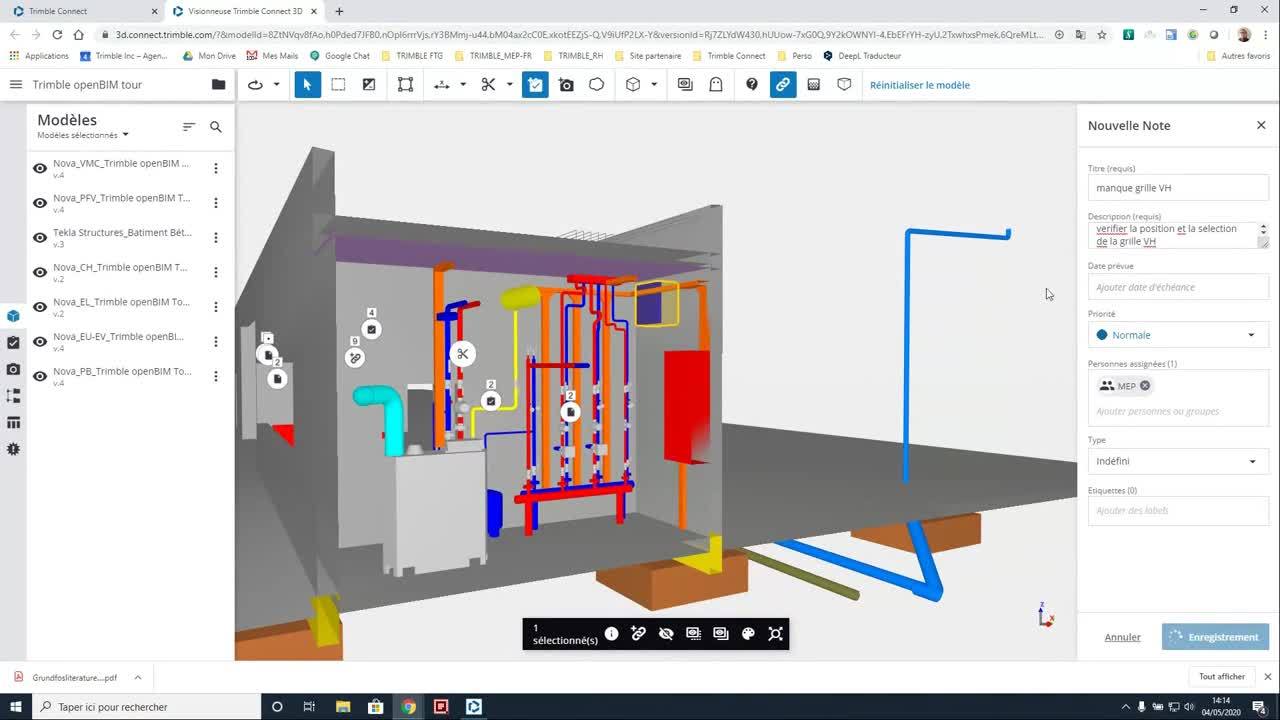Mixed reality — what admittedly sounds like abstract futurism — turns out to be a realistic construction technology being leveraged at this very second. Don’t get mixed up, because mixed reality delivers real-world ROI by merging digital and physical environments.
This technology is called “mixed” reality because it blends virtual reality with the real world to immerse users into a “mixed” environment. Mixed reality makes project data more actionable by overlaying holographic data onto real-world environments.
The applications for facility management are endless — quality control, system monitoring, energy coordination, maintenance, remodels, etc. Any task that could benefit from increased data support and model visualization is a good candidate for mixed reality.
Recommended Read:
3 Surprising Ways the Constructible Process Impacts Owners and Facility Managers
Mixed reality in facility management
Facility management can feel like spinning plates: managing critical systems, overseeing housekeeping and repair duties, maintaining energy systems, and much, much more. That’s why it’s important to leverage any and all workflow improvements to help streamline the logistics of facility management.
Mixed reality is exciting for facility managers who are constantly finding new ways the technology adds value to their programs. Combined with a field-verified, “as-built” constructible model, maintenance technicians, and others tasked with handling various renovation and improvement projects can use mixed reality to see data-rich model components that form systems— like chillers, mechanical systems, electrical circuits, etc— overlaid in real-time.
When facility managers integrate BIM modeling software with a mixed reality platform like the XR10 with HoloLens 2 technology, 3D models can be overlaid directly on the as-built environments. Take, for example, the utility of mixed reality for building remodels. Construction teams are not always privy to what has already been built when they undertake a remodel. Instead of depending on guesswork or memory, mixed reality allows specialists to overlay new designs over existing infrastructure to help coordinate around the existing framework. This gives the technician knowledge about systems that can’t be seen behind the wall, ceiling, etc.
By using mixed reality, technicians can speed up repairs, renovations, and remodels by locating key connections and available spaces behind current walls and above existing ceilings.
This technology can also help maintenance crews better visualize the result of proposed changes or upgrades without requiring any time-intensive or costly exploratory work. The more extensive a facility’s maintenance requirements, the more time and money mixed reality technology can save for the owner.
The fact of the matter is that buildings are 3D but blueprints are not. It can be difficult to understand the full picture from a limited, overhead view of each individual layer. Lines run above or below one another, so while you might get a general idea of placement, facilities managers receive little insight into height. 3D visualization through mixed reality helps deliver unprecedented project details available only through 3D model integration.
Data and mixed reality
Constructible models — models you can actually build from — can help elevate BIM beyond mere conceptual design. These 3D models deliver important, actionable information on how and where components and systems actually exist in the real world.
Constructible models make BIM applicable in post-build because they contextualize component data. For example, facility managers can overcome the time waste of routine maintenance by referencing Constructible models of internal systems. These models will quickly illuminate any need for repairs or replacements since they can contain up-to-date information on component status and condition.
Constructible models are living tools that constantly evolve with the building, and they act as up-to-date representations of the as-built reality. Elevate BIM beyond design — Constructible models and mixed reality help facility managers optimize energy usage, understand how building spaces are used, and improve a structure’s usefulness, longevity, and cost.
There are many changes on the horizon for Facility Managers, read 3 Surprising Ways the Constructible Process Impacts Owners and Facility Managers to learn more.
















